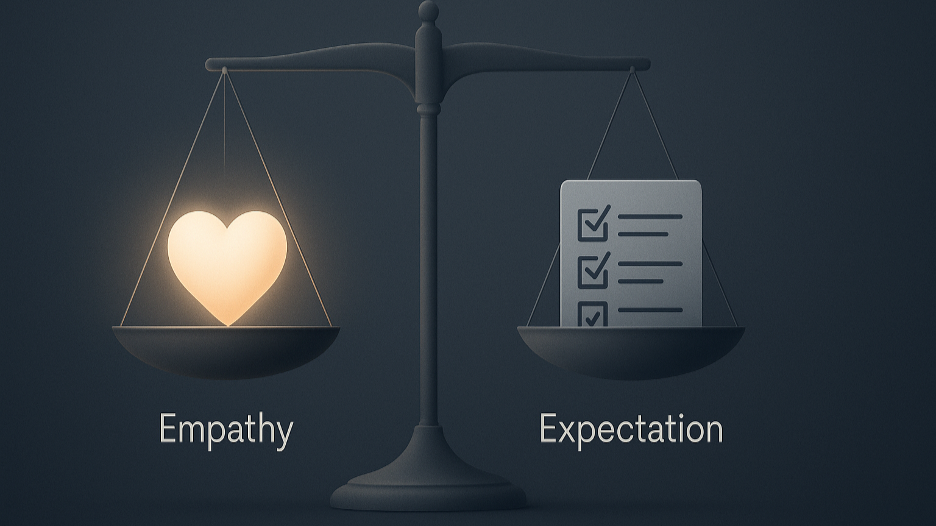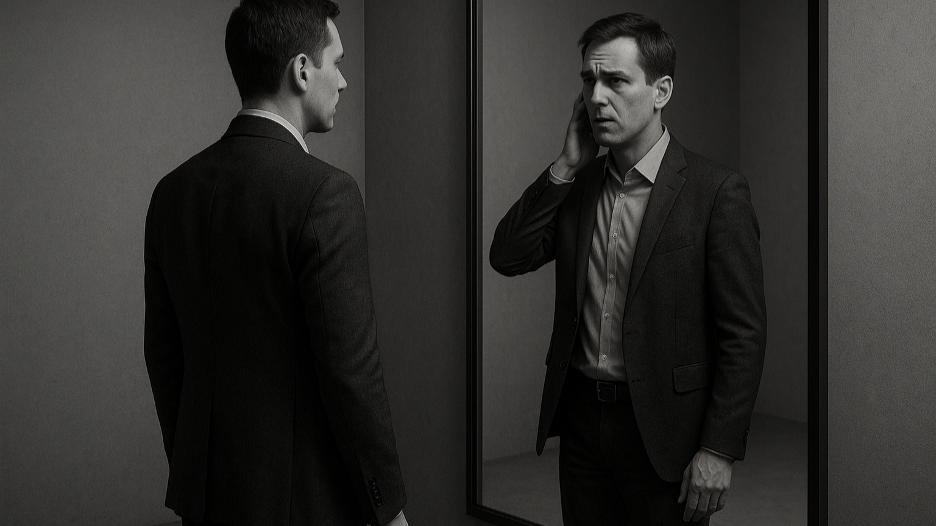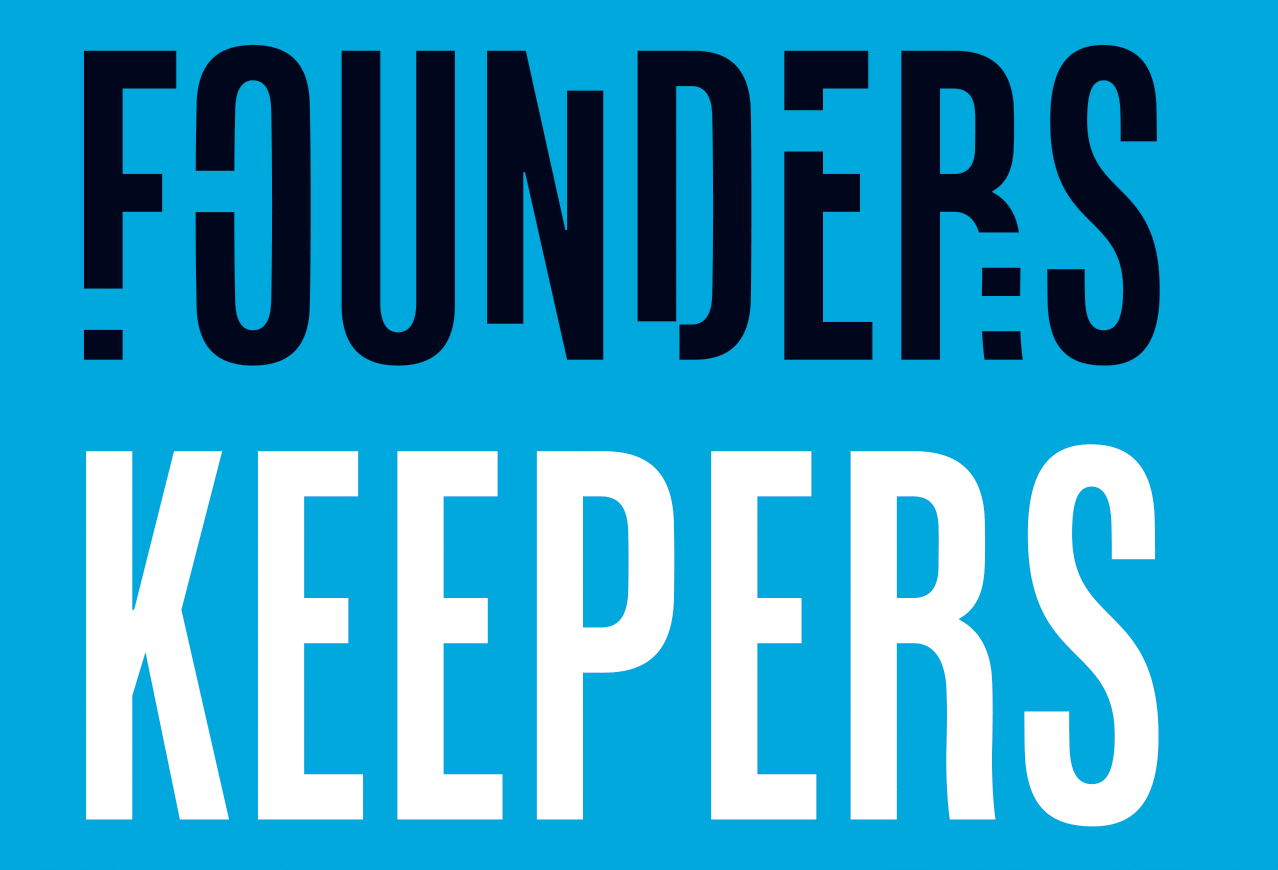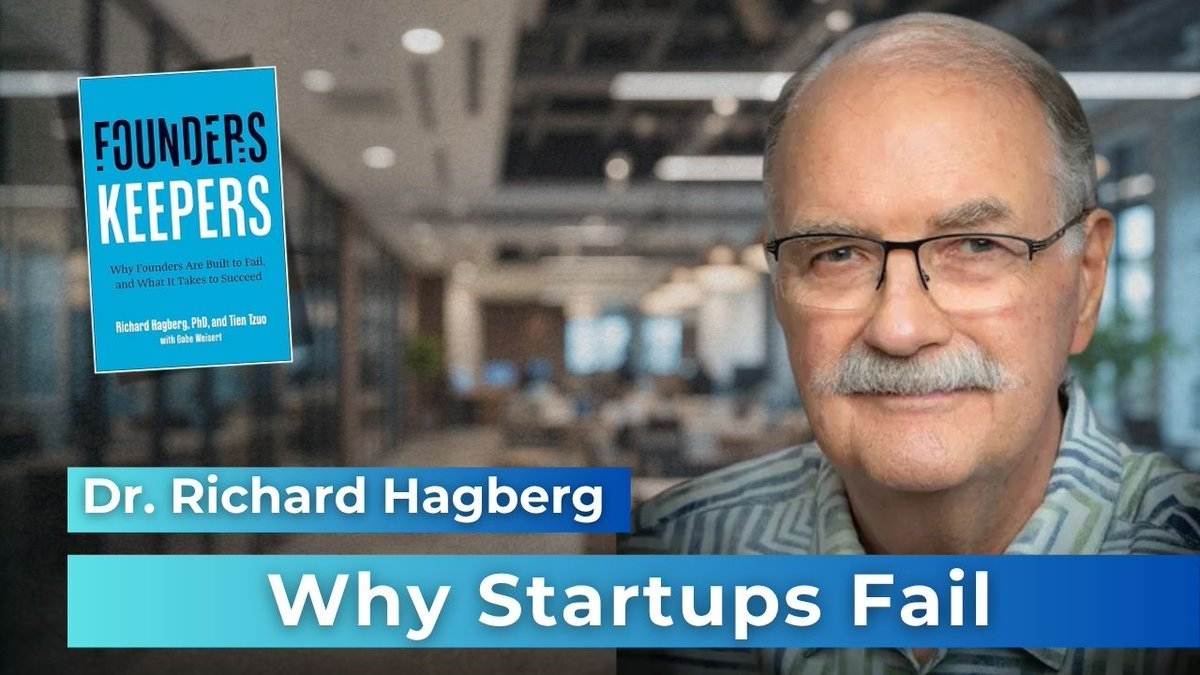Article
Unlocking Hiring Success: 10 Proven Strategies and Executive Coaching Tips for Startup Founders
June 11, 2024
Mastering the Hiring Process

Hiring the right talent is one of the most critical challenges for startup founders. With the potential to make or break a company's success, effective hiring requires a strategic approach and keen awareness of common pitfalls. In this article, we explore ten essential keys to hiring success, providing actionable insights to help founders build strong, cohesive teams. Additionally, we delve into the transformative role of executive coaching, demonstrating how personalized guidance can refine hiring processes, enhance decision-making, and ultimately drive startup growth.
Below are my top 10 strategies for achieving success in hiring:
By following these strategies, founders can significantly improve their ability to hire top talent, ensuring their team is strong, cohesive, and capable of driving the company towards its goals. Want to maximize your hiring performance, work with an experienced Leadership Coach.
Why Executive Coaching Matters
Hiring the right talent is a complex and nuanced process, requiring not only technical skills but also strong interpersonal and strategic capabilities. Founders, often focused on growth and product development, might lack the time or expertise to refine these skills independently. An experienced executive coach can provide invaluable support in several key areas to improve a founder's hiring process.
An experienced executive coach can significantly enhance a founder’s ability to hire top talent. By providing personalized feedback, developing structured processes, improving interview skills, and fostering emotional intelligence, coaches enable founders to make better hiring decisions. This investment in coaching not only improves the quality of hires but also contributes to the overall growth and success of the startup.
Below are my top 10 strategies for achieving success in hiring:
- Acknowledge Your Weaknesses
Recognize that hiring is a specialized skill. Many founders, despite their talents, are not naturally adept at interviewing or assessing candidates due to a lack of experience. This often leads to hasty decisions based on gut feelings rather than objective criteria. By admitting this limitation, you open the door to seeking expert advice and support, such as hiring a seasoned recruiter or using structured interviewing techniques. This self-awareness can prevent costly mis-hires and improve the overall quality of your team.
- Develop a Disciplined Hiring Process Establish a structured hiring process that includes multiple stages: detailed job descriptions, candidate sourcing, thorough interviews, and gathering feedback from references. This process should be documented and followed consistently to ensure every candidate is evaluated on the same criteria. A well-defined process helps avoid impulsive decisions and provides a clear framework for comparing candidates. Additionally, involving multiple team members in the process can provide diverse perspectives and reduce biases.
- Hire for Team Chemistry, Not Just Individual Talent While individual skills and experience are important, how a candidate fits within the existing team dynamics is crucial for long-term success. Look for candidates who complement the strengths and weaknesses of your current team members. This means considering their interpersonal skills, work style, and ability to collaborate effectively. Avoid the trap of hiring only "rock stars" who may have strong individual capabilities but struggle to work well with others, leading to friction and reduced overall team performance.
- Use Data-Driven Hiring Tools Implementing data-driven tools, such as personality assessments and job scorecards, can provide objective measures of a candidate's suitability. These tools help identify key traits and skills that align with the job requirements and company culture. For example, a job scorecard outlines the specific competencies, experiences, and outcomes expected from the role, providing a clear benchmark for evaluating candidates. This approach minimizes the risk of biases influencing hiring decisions and ensures a more thorough and fair assessment process.
- Diversify Your Candidate Pool T o find the best talent, it’s essential to cast a wide net beyond your immediate network. Relying solely on personal connections can lead to a homogenous team that lacks diverse perspectives. Engage your investors, board members, and professional networks to reach a broader pool of candidates. Additionally, consider using specialized recruiting firms that have access to talent in niche areas. A diverse team brings varied viewpoints and problem-solving approaches, which can drive innovation and better decision-making.
- Practice Extreme Backchanneling Backchanneling involves gathering informal feedback about a candidate from their former colleagues and supervisors. This process goes beyond standard reference checks to uncover deeper insights into the candidate’s performance, work ethic, and interpersonal skills. Focus on specific, concrete questions about the candidate’s past behavior, such as their role in projects, challenges faced, and interactions with team members. This detailed feedback can reveal potential red flags or confirm the candidate’s suitability for your team.
- Sell Your Vision Interviews are not just about assessing candidates; they are also an opportunity to sell your company’s vision and culture. Talented candidates often have multiple job offers and need to be convinced that your startup is the right choice. Share your company’s mission, values, and growth potential. Highlight the impact they can make and the opportunities for personal and professional growth. A compelling vision can attract candidates who are passionate about your mission and willing to invest their talents in your startup.
- Adapt to Different Stages of Growth The type of talent your startup needs will evolve as the company grows. Early on, you may need generalists who can wear multiple hats and handle a variety of tasks. As you scale, the need for specialists and experienced leaders increases. These individuals bring expertise in specific areas, such as product development, marketing, or operations, and can help navigate the complexities of scaling a business. Continuously reassess your hiring needs based on your company’s growth stage and adjust your recruitment strategy accordingly.
- Leverage Recruiting Firms Strategically Choosing the right type of recruiting firm can significantly impact your hiring success. Contingency recruiters are useful for quickly filling mid-level positions without upfront costs. Retained search firms are ideal for senior roles where the impact of a hire is significant, offering a dedicated and thorough search process. Boutique firms provide niche expertise, particularly valuable for specialized roles. In-house recruiters, once the company has reached a certain size, offer long-term alignment with your culture and continuous talent pipeline development. Recruitment process outsourcing (RPO) firms can handle large-scale hiring needs efficiently, though with potential cultural misalignment risks.
- Emphasize Flexibility and Innovation To attract top talent, emphasize the dynamic environment and the innovative, disruptive nature of your startup. Highlight the opportunities for creativity, problem-solving, and personal growth within your company. Candidates who thrive in such environments are often more adaptable and capable of handling the ambiguity and challenges that come with startup life. Showcase your company’s flexibility, such as remote work options or flexible hours, to appeal to candidates who value work-life balance and the freedom to innovate.
By following these strategies, founders can significantly improve their ability to hire top talent, ensuring their team is strong, cohesive, and capable of driving the company towards its goals. Want to maximize your hiring performance, work with an experienced Leadership Coach.
Why Executive Coaching Matters
Hiring the right talent is a complex and nuanced process, requiring not only technical skills but also strong interpersonal and strategic capabilities. Founders, often focused on growth and product development, might lack the time or expertise to refine these skills independently. An experienced executive coach can provide invaluable support in several key areas to improve a founder's hiring process.
- Personalized Assessment and Feedback
Executive coaches offer personalized feedback based on thorough assessments of a founder's strengths and weaknesses. This tailored approach helps founders understand their natural biases and blind spots that may affect their hiring decisions. By working with an executive coach, founders can develop a more objective and balanced perspective, leading to better hiring outcomes.
- Developing a Structured Hiring Process
An executive coach can assist in designing and implementing a structured hiring process. They bring expertise in best practices for job descriptions, interview techniques, and candidate evaluations. With a coach’s guidance, founders can create a consistent and repeatable process that reduces the risk of bad hires and ensures that all candidates are assessed fairly and thoroughly.
- Enhancing Interview Skills
Many founders struggle with the interpersonal aspects of interviewing, such as active listening, reading non-verbal cues, and building rapport. An executive coach can provide training and practice sessions to improve these skills. They can role-play interview scenarios, offer constructive feedback, and help founders develop the confidence and competence needed to conduct effective interviews.
- Improving Decision-Making
Executive coaches help founders enhance their decision-making capabilities by teaching them how to evaluate candidates based on objective criteria rather than gut feelings. They can introduce data-driven tools and techniques for assessing candidate fit, such as competency models and behavioral interview questions. This structured approach leads to more informed and rational hiring decisions.
- Facilitating Self-Awareness and Emotional Intelligence
Effective hiring requires a high level of self-awareness and emotional intelligence. Executive coaches work with founders to develop these traits, helping them become more attuned to their own emotions and those of others. This increased emotional intelligence enables founders to better understand candidate motivations, assess cultural fit, and create a positive interview experience.
- Building a Positive Company Culture
An executive coach can guide founders in defining and communicating their company culture and values. This clarity helps attract candidates who align with the company’s mission and vision. Coaches also assist in integrating new hires into the company culture, ensuring a smooth onboarding process and higher retention rates.
- Navigating Difficult Conversations
Hiring often involves difficult conversations, such as providing feedback to unsuccessful candidates or making tough decisions about current team members. An executive coach can provide strategies and frameworks for handling these conversations with empathy and professionalism. This skill is crucial for maintaining a positive employer brand and fostering a respectful work environment.
- Continuous Improvement
The hiring process is not a one-time event but an ongoing activity that evolves with the company. Executive coaches help founders establish a culture of continuous improvement by regularly reviewing and refining their hiring practices. This iterative approach ensures that the hiring process remains effective and aligned with the company’s changing needs.
An experienced executive coach can significantly enhance a founder’s ability to hire top talent. By providing personalized feedback, developing structured processes, improving interview skills, and fostering emotional intelligence, coaches enable founders to make better hiring decisions. This investment in coaching not only improves the quality of hires but also contributes to the overall growth and success of the startup.
Discover the transformative power of Dr. Rich Hagberg's leadership coaching, rooted in data-driven analysis. With decades of experience, Dr. Hagberg excels in enhancing self-awareness, balancing strengths and weaknesses, and fostering effective decision-making. His tailored approach helps founders build strong teams and navigate growth challenges seamlessly. Ready to elevate your leadership skills and drive your startup to success?
Learn more about Dr. Rich Hagberg's coaching services or contact him today to start your journey.
Learn more about Dr. Rich Hagberg's coaching services or contact him today to start your journey.
share this
Related Articles
Related Articles

The Nicest Boss in the World He was adored. He remembered birthdays, checked in on people’s families, and stayed late helping fix slides no one asked him to touch. His team called him “the best boss we’ve ever had.” He was also running on fumes. Behind the warm smile was a leader quietly burning out — drowning in everyone else’s problems, too empathetic for his own good. If you’re a leader who prides yourself on caring deeply, this might sting a little: empathy, taken too far, becomes control in disguise. Empathy’s Secret Shadow Empathy is essential for leadership. It builds loyalty, safety, and trust. But the same trait that makes people feel seen can also make them dependent. When you can’t tolerate someone else’s discomfort, you start protecting them from it. You step in to fix, to soothe, to rescue. It looks noble. It feels generous. But it quietly steals agency — theirs and yours. Your team stops growing because you’re doing their emotional labor. You stop leading because you’re managing feelings instead of outcomes. That’s the hidden cost of care. The Emotional Guilt Loop Over-empathetic leaders live in a constant tug-of-war between compassion and guilt. They think: “They’re already stretched — I can’t pile more on.” “If I push harder, I’ll seem uncaring.” “I’ll just do it myself; it’s easier.” Sound familiar? That’s not empathy anymore. That’s guilt masquerading as kindness. And guilt makes terrible business decisions. Because guilt doesn’t guide you toward what’s right. It just steers you away from what feels uncomfortable. A Founder’s Story One founder I coached, let’s call her Lina, led with heart. She built her company around “people first.” And she meant it. But somewhere along the way, “people first” turned into “me last.” She couldn’t say no. She kept saving underperformers, approving vacations during crunch time, rewriting others’ work to spare them stress. Her team adored her — until they didn’t. Because beneath her helpfulness was quiet resentment. And resentment always leaks. The breakthrough came when she realized something simple but hard: “I was protecting people from learning the hard parts of growth.” That’s when she started leading again instead of parenting. When Caring Becomes Control Here’s the paradox: the more you care, the more you risk over-controlling. You jump in to fix not because you don’t trust them, but because you feel for them. It’s empathy turned inward — I can’t stand watching them struggle. But leadership isn’t about eliminating discomfort. It’s about using it wisely. People grow by stretching, not by being spared. When you save someone from every failure, you’re also saving them from competence. The Biology of Burnout Chronic empathy triggers chronic stress. When you absorb other people’s emotions all day, your nervous system never gets a break. You start mirroring everyone’s anxiety like an emotional amplifier. Your brain thinks you’re in crisis — even when you’re not. That’s why over-caring leaders are often the first to burn out. Their compassion becomes constant cortisol. The irony? The leaders who want to create safety for others end up unsafe themselves. How to Care Without Carrying Feel, then filter. It’s okay to feel someone’s frustration. Just don’t keep it. Ask: “Is this mine to hold?” Help through accountability. Say, “I know this is tough, and I also need you to take ownership.” The and matters. Let discomfort be developmental. When a team member struggles, resist rescuing. Stay present, not protective. Coach before you comfort. Instead of “Don’t worry,” try, “What do you think your next move is?” Reframe empathy as empowerment. Caring isn’t about absorbing pain; it’s about believing people can handle it. Funny but True One exec I worked with told me, “Every time I stop helping, I feel like a jerk.” I said, “No — you feel like a leader. It just takes a while to tell the difference.” He laughed and said, “So… you’re telling me leadership feels bad at first?” I said, “Exactly. Growth always does.” The Cultural Ripple Effect When leaders overfunction, teams underfunction. When leaders hold space instead of taking space, teams rise. Empathy should expand others, not consume you. The healthiest cultures balance care and candor — support and stretch. They normalize struggle as part of the process instead of something to be hidden or rescued. That’s what real compassion looks like in motion. The Maturity of Tough Empathy Empathy without boundaries is exhaustion. Empathy with boundaries is wisdom. The mature version of empathy doesn’t say, “I’ll protect you.” It says, “I believe you can handle this — and I’ll walk beside you while you do.” That’s not cold. That’s developmental. Your Challenge This Week Notice where you’re rescuing someone instead of coaching them. Pause before you step in. Ask yourself, Am I helping because they need it — or because I need to feel helpful? Then take one small risk: let them handle it. They’ll probably surprise you. And you’ll feel lighter than you have in months. Final Word Caring is beautiful. It’s what makes you human. But unchecked empathy turns leaders into emotional pack mules — carrying what was never theirs to bear. Real leadership is still full of heart. It just remembers that compassion without accountability isn’t love. It’s fear. And the moment you stop rescuing everyone, you finally start freeing them — and yourself.s)

The Smart Leader’s Blind Spot It’s strange how often the smartest people make the worst decisions under pressure. They don’t lose IQ. They lose perspective. I’ve seen this happen more times than I can count. A sharp, decisive executive starts second-guessing every move. They overanalyze, overwork, and overcontrol — all in the name of being “thorough.” They think they’re being rational. But underneath the spreadsheets and meetings is something far less logical. It’s fear. The Fear That Doesn’t Look Like Fear We think of fear as panic — sweating, shaking, obvious. But most leadership fear hides behind competence. It shows up as perfectionism, busyness, overcommitment, indecision. It sounds like, “Let’s get more data.” “Let’s not rush this.” “Let’s keep this one close.” That’s not analysis. That’s avoidance with a better vocabulary. When fear runs the show, the goal subtly shifts from making the right decision to avoiding the wrong one. And those two things are worlds apart. The Cost of Fear-Based Leadership When leaders operate from fear, everything tightens. They stop listening. They rush to defend. They play small when the company needs boldness. They keep people who are loyal over people who are competent — because loyalty feels safer. And here’s the real tragedy: the team starts copying the fear. They become cautious, compliant, quiet. Pretty soon, no one’s leading anymore. They’re all managing risk — mostly emotional risk. A CEO’s Moment of Truth One CEO I coached — brilliant, confident, deeply human — was terrified of being wrong in front of his board. He masked it well. On the outside: decisive. Inside: a constant hum of anxiety. After a tough quarter, he admitted, “I realized half my decisions weren’t based on strategy — they were based on protecting my image.” That moment of honesty was the start of his maturity curve. Once he could name the fear, it stopped running his show. He didn’t become fearless. He became aware. And awareness is what turns reaction into wisdom. Why Fear Feels Safer Than Clarity Fear has a strange way of convincing us it’s caution. Caution whispers, “Slow down and look.” Fear screams, “Don’t move.” The first sharpens judgment. The second paralyzes it. And the more we listen to fear, the more it disguises itself as prudence. That’s why emotional maturity isn’t about suppressing fear. It’s about being able to say, “Ah, that’s fear talking — not fact.” How Fear Distorts the Mind Here’s what happens when fear hijacks leadership: Tunnel vision: You fixate on the immediate threat and forget the big picture. Confirmation bias: You start looking for data that validates your anxiety. Short-termism: You make safe decisions that feel good now and cause pain later. Blame shifting: You protect your ego by pushing ownership outward. The mind gets smaller. The leader gets reactive. The company gets stuck. The Maturity Shift Emotional maturity isn’t about being unshakable. It’s about staying curious in the presence of fear. Mature leaders don’t pretend they’re fearless. They just don’t let fear make the decisions. They pause, breathe, and ask, “What part of this is data, and what part is my insecurity talking?” That single question can change everything. A Founder’s Story A founder I worked with once said, “I’m not afraid — I just have high standards.” But as we unpacked it, he realized those “high standards” were actually a way to control outcomes. He feared disappointment — his own and others’. When he finally stopped trying to protect his reputation and started protecting his clarity, his decisions got faster and cleaner. The business didn’t just grow — it started breathing again. Because when you stop trying to look right, you finally have room to be right. Funny, But True I once asked a CEO what he’d do differently if he weren’t afraid of failing. He said, “Probably the same things I’m doing now — just with less Advil.” That’s the thing: most leaders already know what to do. Fear just makes it hurt more. How to Lead Without Fear (Even When It’s There) Name it early. The sooner you recognize fear, the less power it has. Ask yourself, “What’s the story fear’s telling me right now?” Reframe mistakes as tuition. You’ll still pay for errors — might as well learn something from them. Separate identity from outcome. A bad decision doesn’t mean a bad leader. It means a leader who’s still learning — like everyone else. Keep one truth-teller nearby. Someone who loves you enough to tell you when you’re acting from ego. Practice micro-bravery. Tell one hard truth a day. Say “I don’t know” once a week. Let discomfort become strength training. The Paradox of Fear Fear doesn’t make you weak. It means you care. But if you never face it, it becomes your compass — and it always points backward. Courage, maturity, clarity — they’re not opposites of fear. They’re what happen when you stop running from it. Your Challenge This Week Next time you feel that knot in your stomach — before a board meeting, a tough conversation, a high-stakes call — pause. Ask yourself: What am I afraid might happen? Then ask: What might happen if I act from clarity instead of fear? That’s not therapy. That’s leadership hygiene. Final Word The mark of maturity isn’t fearlessness. It’s self-awareness. You can’t control your fear. But you can choose whether it sits in the driver’s seat or the passenger’s. Great leaders don’t wait for fear to disappear. They lead with it beside them — quietly, respectfully — but never in charge.

The Charisma Illusion Charisma gets all the press. It fills conference rooms, wins funding rounds, and dominates the LinkedIn highlight reel. We treat it like the gold standard of leadership — as if volume equals vision. But charisma is a sugar high. It spikes energy, then crashes trust. Composure, on the other hand — quiet, grounded, centered composure — is the kind of influence that lasts. It doesn’t light up a room; it settles one. When things go sideways, it’s not the charismatic leader people look for. It’s the calm one. The Crisis Test Picture this. The product just failed. The client’s furious. Your team’s pacing like trapped cats. Two leaders walk in. One storms into action — loud, fast, “What the hell happened here?” The other walks in slowly, looks around, and says, “Okay, let’s breathe. What do we know so far?” The first one gets attention. The second one gets results. That’s emotional geometry — the calmest person in the room reshapes everyone else’s state. Why Calm Is the Real Power When you stay composed, you’re not just managing your emotions — you’re regulating the entire system. Here’s the neuroscience behind it: people mirror the nervous system of whoever has the most authority. If you’re grounded, they sync to your rhythm. If you’re frantic, they sync to that instead. You don’t need to lecture anyone on resilience. You just have to model it. It’s not charisma that makes people trust you; it’s the quiet sense that you’re not going to lose your mind when things get hard. Charisma’s Half-Life Charisma is a spark. It can ignite a team — but if there’s no composure beneath it, the whole thing burns out. You’ve seen this movie before: the leader who rallies everyone with a passionate all-hands speech, then disappears into reaction mode when things get messy. Charisma without composure is like caffeine without sleep. You’re awake, but you’re not steady. Composure doesn’t get the applause. It gets the loyalty. A Founder’s Story One founder I worked with — I’ll call him David — was known for being a “high-voltage” guy. He could pitch an investor, fire up a crowd, or talk anyone into anything. But his team? They were walking on eggshells. His energy filled every room, but it left no oxygen for anyone else. During one session, I asked, “When you raise your voice, what happens to theirs?” He went quiet. That was the moment he understood that his passion — the thing he was most proud of — had become the team’s anxiety. A year later, his team described him differently: “He’s still intense, but steady. We trust him more now.” He didn’t lose charisma; he layered it with composure. The Calm Before the Influence Here’s what composure actually looks like: You listen longer. Because real influence starts with attention, not argument. You breathe before reacting. That pause isn’t weakness; it’s power management. You let silence do the work. Charisma fills every space; composure creates space for others to step in. You own your tone. You realize your sighs, your speed, your face — they’re all communication tools whether you intend them or not. You choose steadiness over certainty. People don’t need you to know everything. They just need to know you’re okay not knowing. Funny But True A client once told me, “When I’m calm in a meeting, people assume I’m hiding something.” I said, “Good. Let them wonder.” That’s how unfamiliar calm has become. In some cultures, composure looks radical — even suspicious. But it’s exactly what people crave in a world that never shuts up. Why Charisma Is Easier (and More Addictive) Charisma gets feedback. You see the energy rise, you feel the applause. It’s visible. Composure feels invisible — until you lose it. No one thanks you for staying calm during a crisis. But they remember it when deciding whether to follow you into the next one. That’s why maturity in leadership means getting comfortable with the quiet wins — the meeting that didn’t spiral, the argument that didn’t happen, the team that stayed focused because you did. The Emotional Geometry in Practice Think of composure as geometry because emotions move through space. When you enter a room, you alter its emotional shape. If you radiate calm, people’s shoulders drop. Their thinking widens. They start contributing. If you radiate stress, the room contracts. People shrink. Ideas vanish. Influence isn’t what you say. It’s the energy field you create. Your Challenge This Week Before your next high-stakes meeting, pause outside the door. Take one deep breath and ask yourself: What energy does this room need from me right now? Then bring only that. Nothing more. You’ll be amazed how fast everything slows down when you do. Final Word Charisma captures attention. Composure builds trust. One is about how loudly you shine; the other is about how steadily you glow. The leader who can stay centered when everyone else is spinning doesn’t just have influence — they are the influence. And that’s the kind of power that never burns out.
STAY UP TO DATE
GET PATH'S LATEST
Receive bi-weekly updates from the church, and get a heads up on upcoming events.
Contact Us








